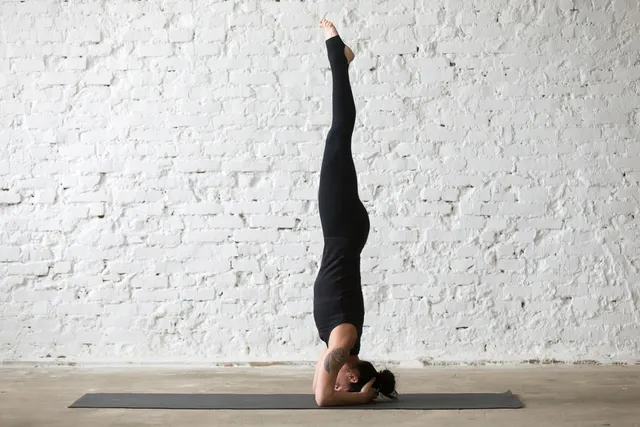
SIRSASANA
Sequence devoted to the posture of SIRSASANA, the balance on the head (real name Salamba Sirsasana I), also called the King of asanas, as its benefits are numerous.
Depending on the mastery of the posture, the effects are variable. For beginners, this posture is invigorating, stimulates the nervous system and relaxes the body. For the advanced, when you can hold this posture for several minutes without being in the force, Sirsasana is very soothing.
And even if this posture strengthens as we practice the trunk, the pectorals, the upper back and the arms, "You should never perform Sirsasana with strength or muscular effort, but with the nerves. and skill. Skill is quite another thing. "Skill is the backbone of all yoga practice" ", B.K.S. Iyengar, Bhagavad-Gita, II, 50
Sirsasana strengthens the heart and stimulates the cardiovascular system. It promotes the venous system of blood and lymph and therefore fights against retention in the feet, ankles and legs. It tones the muscles of the upper body and promotes lung capacity. The inversion of the center of gravity helps relieve the problems of the following organs: kidneys, organs and digestive systems and genitals. This inversion pose helps prevent headaches if they are due to muscle tension in the upper body.
Sirsasana is also a perspective in which the brain, the ego, no longer dominates the heart. The practitioner must overcome his fears and get out of his comfort zone while keeping his balance. This change in gravity affects your entire body, from the tips of your toes to the roots of your hair.
It provides benefits on memory and concentration, works the coordination between the brain and the body as well as its fears and fears.
Even if this posture has many benefits and that its variants are numerous in the arms and legs, do not neglect the contraindications as mentioned in the sequence.
“In the ancient books, Sīrsasana was called the King of all Asanas, and the reasons are not hard to find. When we are born, the head normally comes first, then the limbs. The skull contains the brain which controls the nervous system and the sense organs. The brain is the seat of intelligence, knowledge, discernment, wisdom and energy. It is the seat of Brahman, the Soul. A country cannot prosper without a capable king or constitutional power to guide it; likewise, the human body cannot develop without a healthy brain. ", B.K.S. Iyengar, The Yoga Bible
Access the annotated class sequence with posture images and join the community of teachers!